We’re all guilty of hoarding to a certain extent – the dress you bought five years ago which seemed a good idea at the time, but still has the label on; the ornament you thought looked quirky online but clashes with your décor; or the curtains you bought because the sale price was too good to ignore and now, a decade later, they are still in a bag waiting to be hemmed.
We’ve all got stuff around the house which we don’t use or even like but how do we decide what to get rid of and how do we make our homes a little more streamlined?
In a bid to help us declutter our homes and decide what to keep and what to give away, we’ve enlisted the help of some experts to help clear the clutter this spring.
Step 1: The attic
Sarah Reynolds is the owner and founder of organisedchaos.ie. Her whole career revolves around helping people to declutter and reorganise their homes. She says that getting rid of items we don't need is vital, not only to make our homes feel more spacious but also to get rid of a weight off our minds.
The first place to start is the attic.
“Generally if there is a lot of pressure on space within our homes, it’s usually from not decluttering enough, accumulating too much, or having an overstuffed attic which doesn’t allow for an overflow of items to be stored there,” she says. “So it’s important to clear it out because it allows you to use your home better and store more effectively up there. Also, from an emotional point of view, knowing your attic is filled to the brim creates a constant “to-do” list at the back of your mind, which can really weigh on us. So it is a weight – literally and figuratively.
“In order to start clearing the attic, make sure that there is plenty of space in the main house to pull items and boxes down, spread out the contents and really decide what you’re going to keep and let go of. This process continues as you make your way through the attic.”
Professional organiser Danielle Rooney of Organised by D says because attics are used as a dumping ground for everything from Christmas decorations to unused furniture, clearing them out will help to make your house feel less cluttered.
“Firstly go through it all and decide what you actually need,” she says. “Old furniture should be donated or sold on, then get some large, clear boxes – these are great as they are stackable, and you can see what is inside – then start organising into groups, keeping similar items together and make sure to label the boxes as well. And if you are storing clothes, I would recommend vacuum packing them and putting the packs into a suitcase to save on space.”
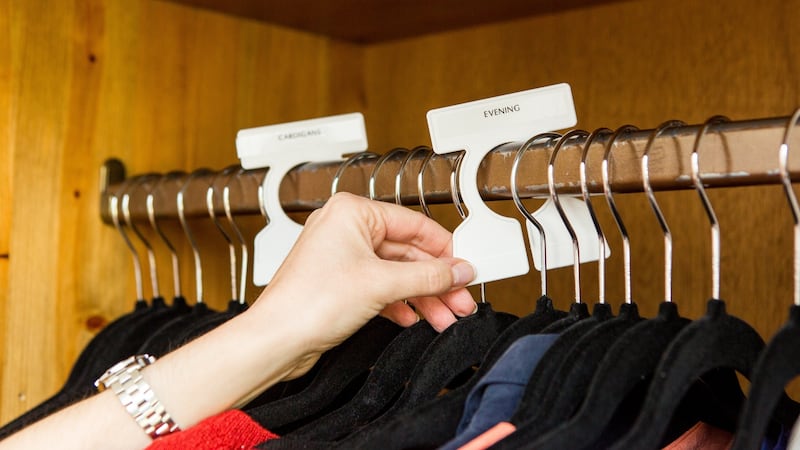
2: The wardrobe
We’ve long been advised that if we haven’t worn something in two years (or is it five?) that we should pass it on, but more often than not, we remember fondly the gold sequined top or 1970s style wide-collared shirt we donated to charity and regret our rash (three-year) decision to get rid. But according to the experts sentimentality has no place in decluttering.
"When it comes to clothes, the rule of 'if it hasn't been worn in X number of months then let it go' is a rule which helps some people as they need it to help them make the decision. So if this works, then use this rule," Reynolds says.
“There is always an element of risk with any decision – whether you’re deciding what dress to keep or which person to marry – and decluttering is a relationship with your decision making. Yes, you might regret throwing out the dress, but that’s okay. We have to ask ourselves why our things have such a hold on us. If we don’t control the clutter, it will control us – physically, mentally and emotionally.”
Rooney says it is important to leave emotion behind when it comes to clearing out our wardrobes.
“I would suggest being ruthless and getting rid of all the things which no longer serve purpose or don’t fit you anymore as this creates negative body thoughts,” she says. “I try to only buy things that I know I will wear in the future, but I also sell a lot on Depop and will keep things if they are timeless or are of good quality and are versatile – and if you are not completely ready to let go of something, vac-pack it for six months and if you haven’t worn it by then, get rid.”
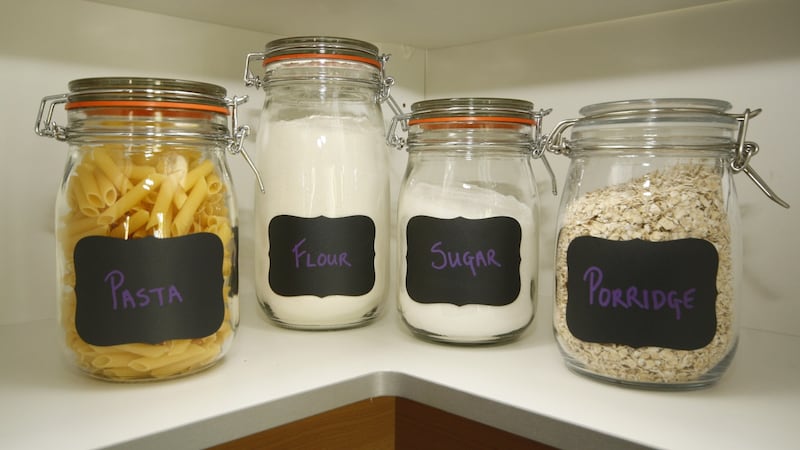
Step 3: The kitchen
The kitchen is the beating heart of most homes; it’s where the family convenes, where meals are cooked, and homework and school projects are deliberated over. It is no wonder that clutter accumulates here with wild abandon.
Rooney says that if we try to keep counter tops as clear as possible, this will help to maintain some level of order. She also advises binning packaging and placing food into designated containers.
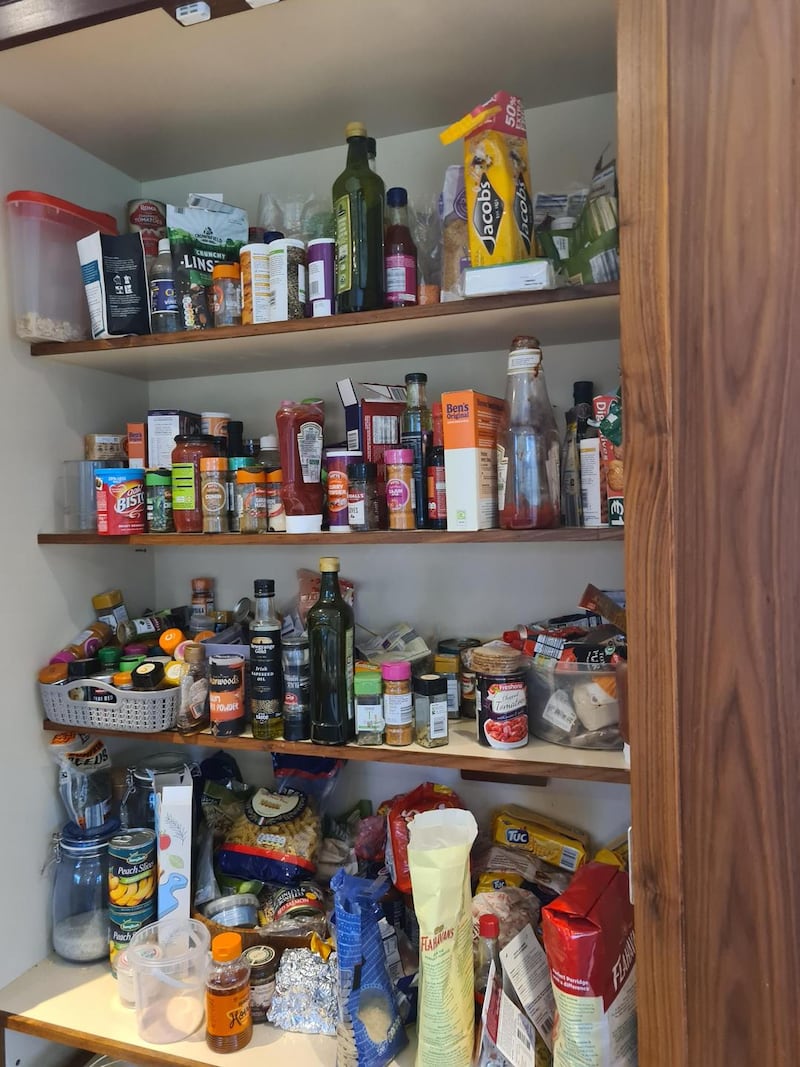
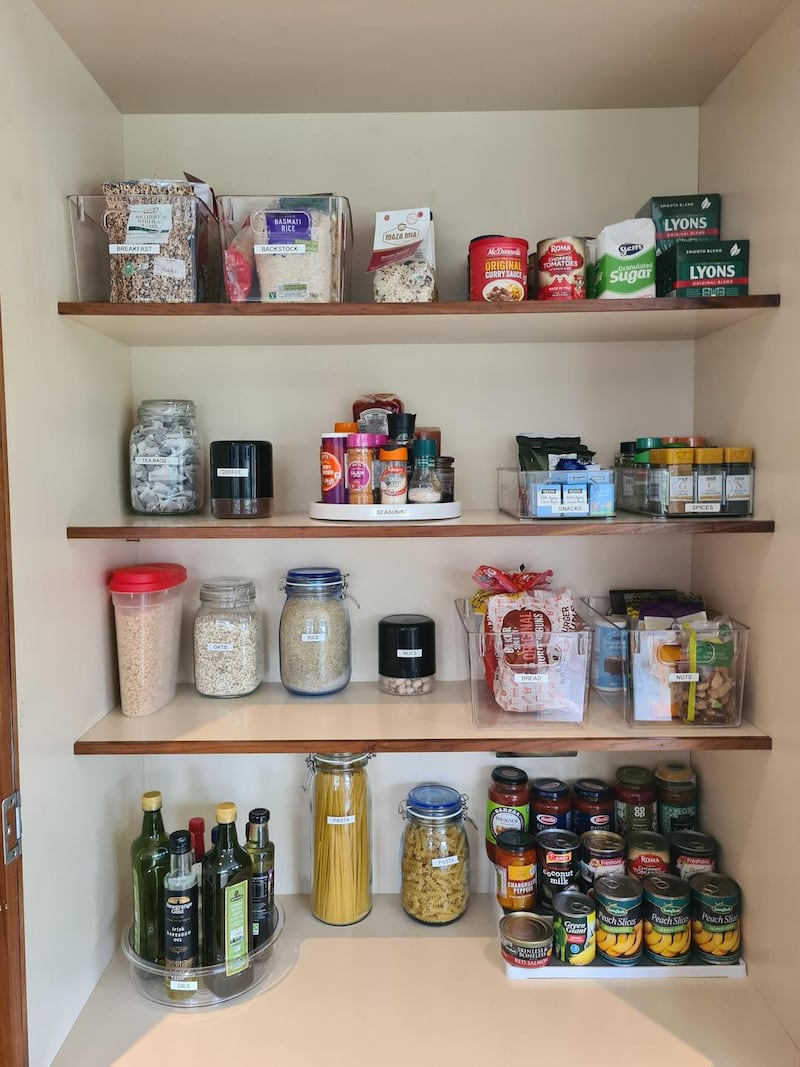
“Food packaging takes up so much space, so by decanting you can see what you have, and can avoid buying multiples and overspending,” she says. “Clear food containers, shelf stackers and Lazy Susans are my top kitchen products. But most of us are guilty of having too many of them – the same goes for Tupperware and water bottles – so make a point of going through them every few months and getting rid of those you don’t need.
“You don’t need a huge amount of crockery either. There are four of us in our house and as a rule, I just keep eight of each piece and if we have guests over, I have a spare set which I keep in the attic as otherwise an excess of plates and bowls takes up unnecessary space.”
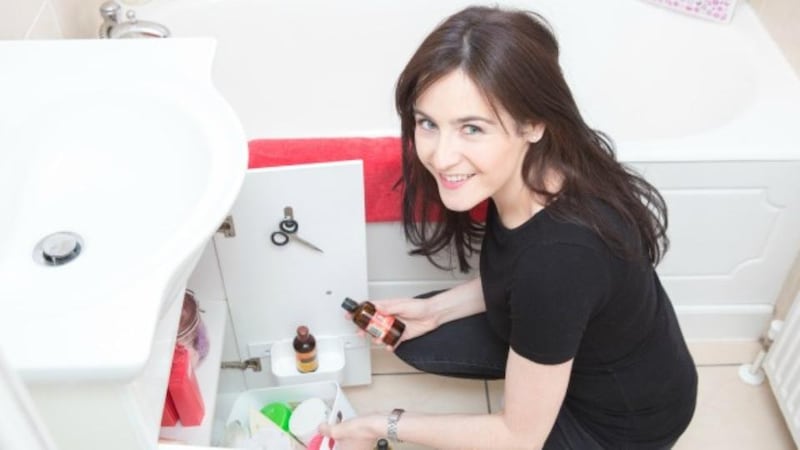
Step 4: The bathroom
Reynolds, who has just launched Organised Works for corporate clients, says accumulating less is the best way to make your home less cluttered – but if you just can’t resist retail therapy, then make sure to declutter more often.
“If you feel you are in a constant loop of decluttering, then it is usually because more is coming in than going out,” she says. “It’s like trying to lose weight – the exercise needs to exceed the consumption of calories – so when it comes to the bathroom, gather up all the toiletries and categorise them (eg makeup, body lotions, face creams, nail and feet items).
“Once that is done you go category by category and declutter items. By taking this bird’s eye view of the entire number of toiletries it allows you to see exactly what you own and therefore will hopefully make it easier to make decisions on what you’re keeping and what you can let go of.”
Step 5: Toys
Where little people gather, clutter will surely follow, but Reynolds says most children enjoy having a system to keep their toys and books in some sort of order – and she has some tips to help them to keep their own spaces a little tidier.
“Allocate one wall of the bedroom or playroom for large toys exclusively – like a little toy car park.
“Make sure you’re putting small items (such as Lego and figurines) into small drawers, boxes or containers and not big ones. If you do the latter, other items will get dumped in on top.
“Use containers without lids. While tidying up, kids are not going to take the lid off, place the item in and put the lid back on. So make it easy on them to throw the item into a container. “It might not be perfect but it’s good enough, tidy and you don’t have to do it,” she advises.
How to get rid of stuff
“The best place to start (with unwanted toys and books) is your local charity shop,” says Reynolds. “However, many of these places are under pressure, so do keep an eye out for refugee centres who will take items – particularly clothes for women and toys for the children – and animal shelters will take old bedding. You can even let things go for free via adverts or check out some online charities who may take school books and even bras.”
"I sell or donate anything we no longer need," adds Rooney. "Furniture can be donated to charity, recycled at your local recycling centre or even sold to make some extra cash – Facebook marketplace is great for getting rid of furniture, clothes can either be donated to your local St Vincent de Paul, or if good quality sold on Depop. And charity shops will also take ornaments, toys, and home furnishings, while mother and baby shelters will also take the same along with baby furniture and buggies.
“Electricals can be recycled at your local appliance store and out of date medicines can be brought to the local pharmacy for disposal.”














